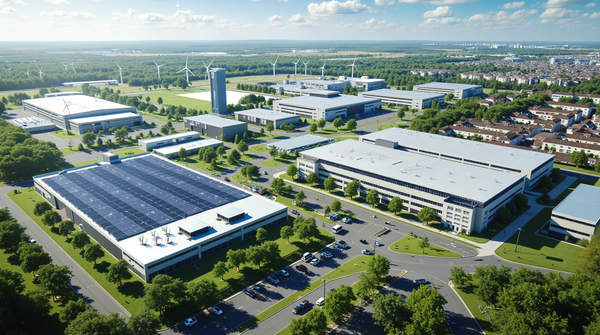Blackout in Spain and Portugal: lessons for the power grid and better integration of local energy

A revealing blackout: what lessons can we learn for our power grid? ⚡
A blackout is more than just a power cut. In Spain and Portugal, the event highlighted both structural flaws and opportunities to rethink our energy management. What can be done to avoid such scenarios in the future? How can we better integrate local energies into a network that is still too centralized? These questions are at the heart of the debate on the resilience of our electricity infrastructures.
Increased dependence on centralized networks
The blackout affected millions of homes, disrupted transport and slowed down economic activity. This dependence on a centralized grid is showing its limits. In Europe, 75% of electricity is still generated by large power plants, then transmitted over long distances. But what happens when a critical transmission line fails? A whole system can collapse like a house of cards.
In Spain, for example, an overload on a major line triggered a chain reaction. Such incidents are rare, but not impossible, especially with the increase in peak consumption associated with heat waves and cold snaps. Solutions do exist, however, to limit these risks.
The complexity of power grids: a major challenge 🔌
The exact causes of the Spanish-Portuguese blackout have yet to be determined, but this incident highlights a crucial fact: the power grid is one of the most complex systems ever created by mankind. Imagine millions of points of production and consumption, interconnected by thousands of kilometers of lines, having to maintain a perfect balance every second.
This intrinsic complexity makes the system particularly vulnerable to cascade effects. A minor disturbance can, under certain conditions, trigger a chain reaction with major consequences. This is the theory of "organized chaos": the more complex a system, the more sensitive it becomes to small variations. In the case of power grids, this fragility is all the more critical as our society depends entirely on their smooth operation.
Agile, digital network management
Beyond physical infrastructures, digital technology plays a key role. Intelligent networks, or "smart grids", make it possible to anticipate and react rapidly to anomalies. In Italy, sensors installed on high-voltage lines send real-time data to control centers. The result? A 15% reduction in serious incidents in just three years.
Optimization also involves better demand forecasting. Thanks to artificial intelligence, it is now possible to model consumption peaks and adapt production accordingly, thus avoiding overloads. These technological advances, combined with strategic investments, can transform the resilience of our networks.
Integrating renewable energies: a new challenge for networks 🌞
The multiplication of renewable energy sources poses a major challenge for grid operators. Unlike traditional power plants, solar and wind generation is variable and decentralized. This intermittency calls for finer-tuned, more reactive grid management.
Municipalities and business parks are at the forefront of this transformation. In Grenoble, for example, a collective self-consumption pilot project enables several municipal buildings to share their solar production. Surplus power is stored in community batteries, optimizing local energy use.
Local self-consumption offers several advantages:
- Reduced on-line losses thanks to proximity between production and consumption
- Greater resilience in the event of main network disruption
- Economic optimization by pooling resources
- Development of a local circular energy economy
These initiatives demonstrate that greater energy autonomy is possible, while maintaining the stability of the global grid. The key lies in the balance between decentralization and interconnection.
A collaborative, decentralized future
These examples show that it is possible to build a more robust power grid, but it requires a collective vision. Blackouts remind us that energy is a common good, and that every player - from governments to citizens - has a role to play. Supporting local energies, investing in modern infrastructures, and educating consumers about their role in demand management are all avenues to explore.
What about you? How do you see the future of our power grid? Share your ideas and let's engage in a constructive discussion together for a more resilient and sustainable energy system! 🌍💡



